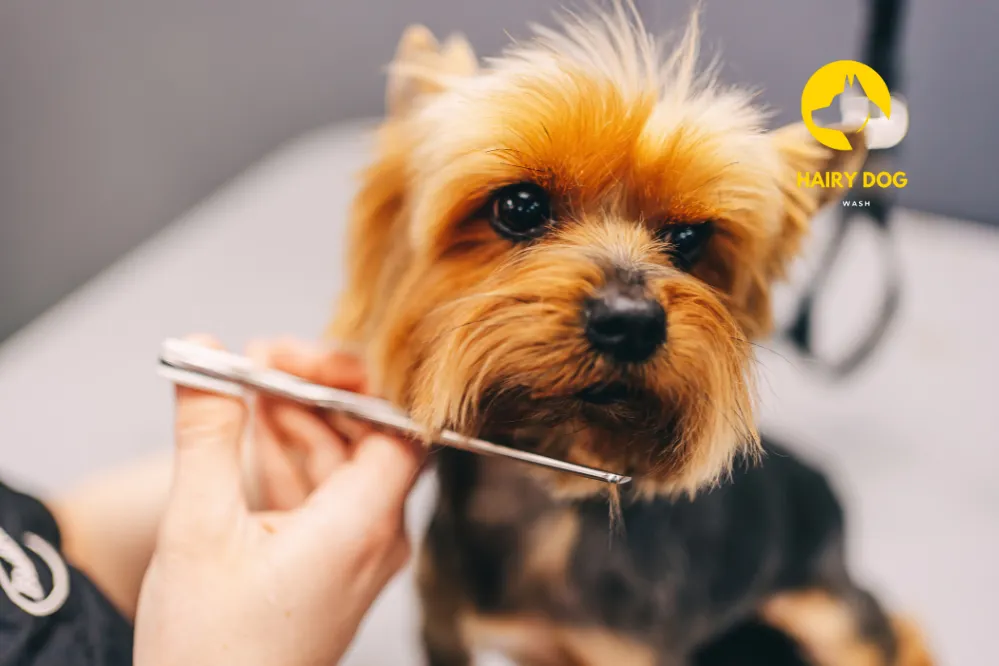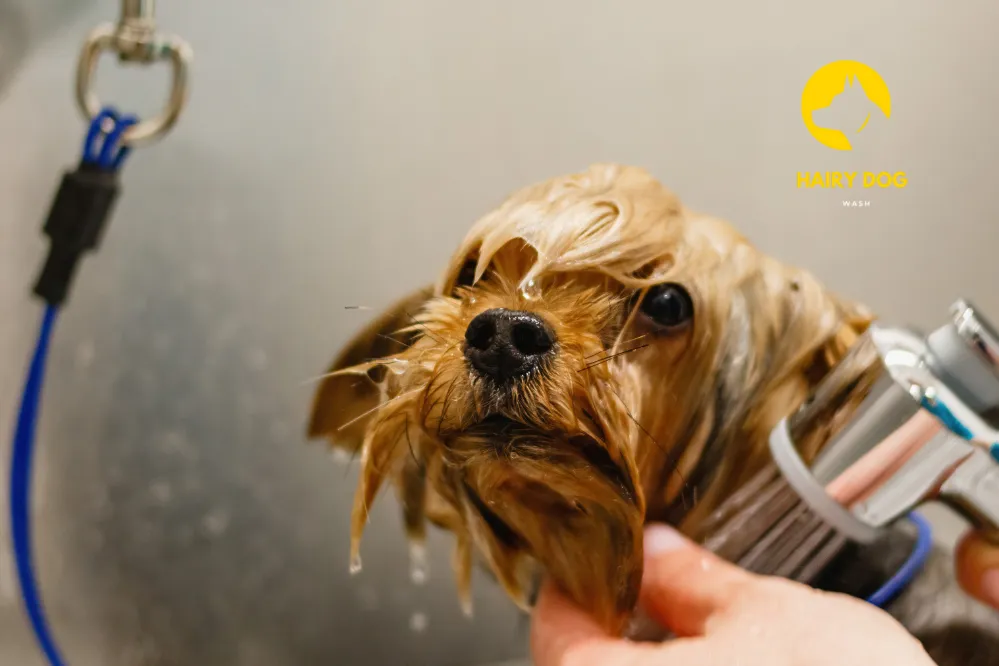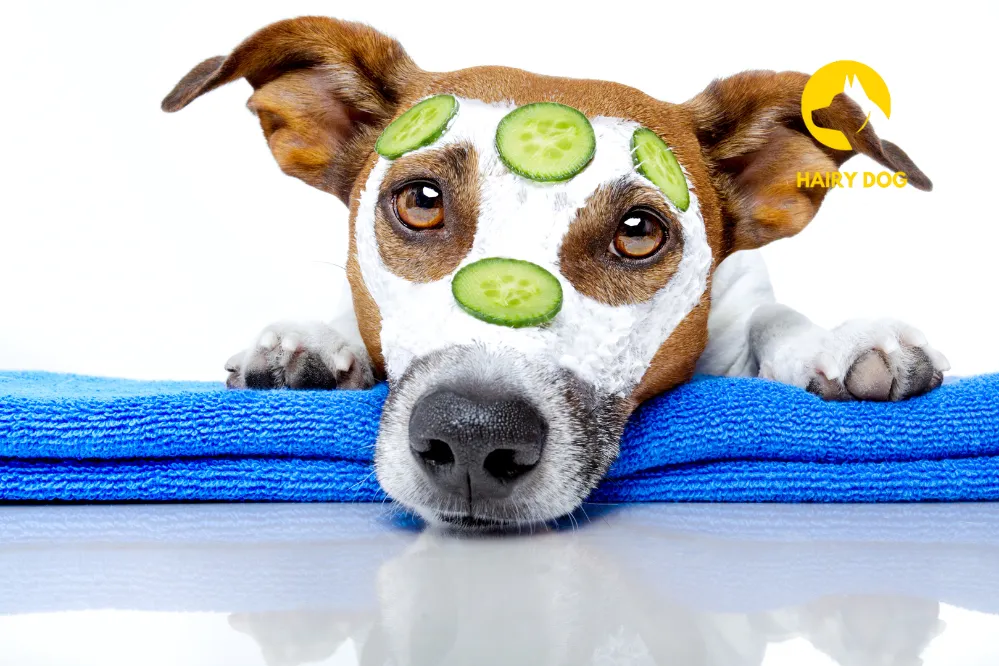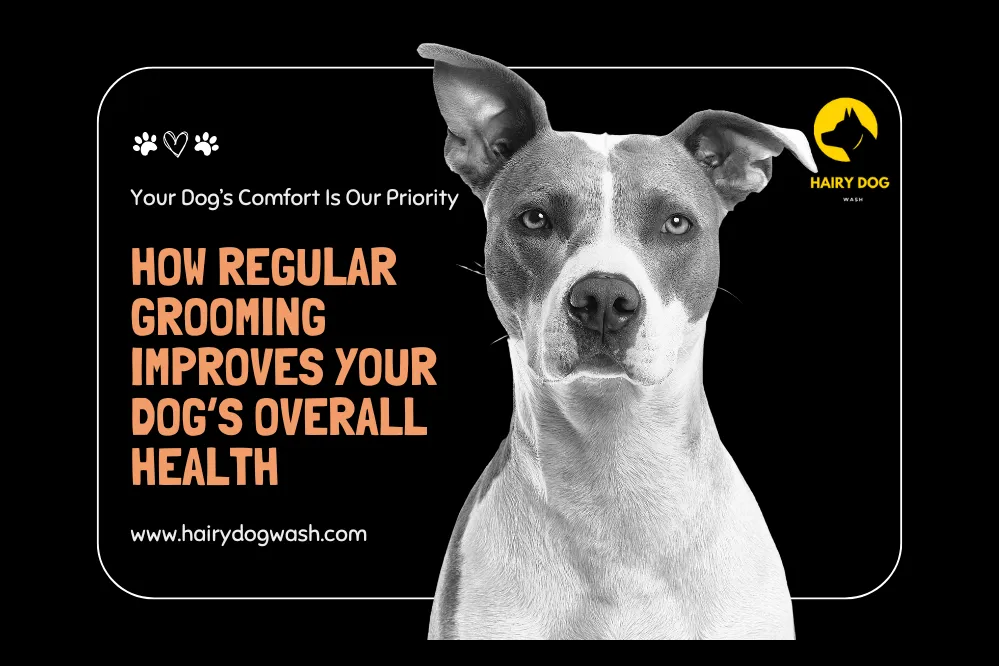As a responsible pet owner, one of the most important aspects of caring for your dog is ensuring their health and well-being. Regular grooming is not just about making your dog look good; it plays a critical role in maintaining their overall health.
Grooming goes beyond brushing their fur and trimming their nails. It is a comprehensive process that contributes to your dog’s physical and mental health. Whether you are grooming your dog at home or taking them to a professional groomer, the benefits of regular grooming cannot be overstated.
In this blog, we will explore the various ways regular grooming helps improve your dog’s overall health. From maintaining a healthy coat and skin to detecting underlying health issues, grooming is essential for your dog’s well-being. We will also discuss how grooming affects your dog’s mental health, strengthens your bond with them, and can even prevent serious health problems down the line. Also read A Day in the Life of a Dog Groomer at Hairy Dog Wash.
1. Keeps the Coat Healthy and Prevents Matting

One of the most obvious benefits of grooming your dog is keeping their coat healthy. Your dog’s coat serves as a barrier against the elements, protecting them from heat, cold, and external irritants. Regular grooming ensures that their coat remains clean, free from debris, and well-maintained.
A well-groomed coat is also important for preventing matting. Matting occurs when your dog’s hair becomes tangled and knotted. This can lead to discomfort and even skin infections. Regular brushing helps prevent mats from forming by removing tangles before they become a problem.
For dogs with long or thick coats, such as Poodles, Shih Tzus, and Collies, daily brushing may be necessary to keep their hair from matting. By preventing matting, you help your dog stay comfortable and free from the discomfort of pulling or tugging on their fur.
Additionally, grooming helps to remove dead hair and promote healthy hair growth. Just as brushing your own hair stimulates blood flow to the scalp, brushing your dog’s fur encourages circulation to the hair follicles. This promotes healthier hair growth and can make your dog’s coat look shinier and more vibrant.
Supports Healthy Skin

Skin health is just as important as coat health when it comes to grooming. Regular grooming allows you to check your dog’s skin for any signs of irritation, redness, sores, or other issues. Dogs are prone to various skin conditions, including dry skin, hot spots, rashes, and flea infestations.
By grooming your dog regularly, you can spot early signs of skin problems before they become serious. For example, if your dog has dry or flaky skin, regular brushing can help distribute natural oils throughout their coat, which can help moisturize their skin. Grooming also helps to remove dirt, debris, and pollen, which can irritate your dog’s skin, causing itching and discomfort.
In some cases, grooming can help prevent skin conditions altogether. For example, keeping your dog’s coat clean and free of mats can help reduce the risk of hot spots, which are painful areas of infected skin that can develop when hair becomes matted and moist. Regular grooming, including baths with appropriate shampoos, can also help remove allergens from your dog’s skin, which is especially important for dogs with allergies. 5 Ways We Keep Nervous Dogs Calm During Grooming in case you are anxious about your pet.
3. Promotes Ear Health

Many dog breeds are prone to ear infections, especially those with floppy ears, such as Cocker Spaniels, Basset Hounds, and Dachshunds. Regular grooming involves cleaning your dog’s ears and checking for any signs of infection or irritation. Ear infections are common in dogs and can cause significant discomfort, leading to scratching, head shaking, or even an unpleasant odor.
Grooming provides an opportunity to clean your dog’s ears and remove any wax buildup or debris. Using a dog-safe ear cleaner and cotton balls, a groomer or owner can gently wipe the inside of the ear to remove any dirt or excess wax. This helps to keep the ear canal clear and reduce the risk of infections.
Ear infections can be caused by bacteria, yeast, or even mites, all of which can be difficult to detect without a thorough inspection. Regular grooming gives you the chance to spot early signs of an ear infection, such as redness, swelling, or discharge. Catching these symptoms early can prevent more serious issues and allow you to get treatment for your dog before the infection becomes severe.
4. Helps Maintain Nail Health

Another crucial aspect of regular grooming is nail trimming. Long nails can be uncomfortable for dogs and may cause them to walk awkwardly, which can lead to joint issues or even injury. Overgrown nails can also snag on carpets, furniture, or other surfaces, potentially causing painful tears or breaks in the nail.
By trimming your dog’s nails regularly, you help prevent these problems and keep their paws healthy. Regular nail trimming is especially important for indoor dogs that do not naturally wear down their nails by walking on hard surfaces. Dogs with long nails are more likely to develop foot problems, including pressure sores, discomfort while walking, and joint issues due to improper alignment.
In addition to the physical benefits, trimming your dog’s nails also allows you to inspect their paws for any signs of injury, swelling, or infection. Regularly checking the nails and paws during grooming sessions can help detect issues like ingrown nails or infections early, making it easier to address them before they cause major problems.
5. Prevents Fleas, Ticks, and Other Parasites
Regular grooming plays a key role in preventing and controlling flea and tick infestations. These parasites not only cause irritation but can also lead to more serious health issues, including the transmission of diseases such as Lyme disease and flea allergy dermatitis.
When you groom your dog, especially when you use a flea comb or bath, you can remove fleas, ticks, and their eggs from your dog’s coat. Regular brushing helps to dislodge fleas before they have a chance to lay eggs and multiply. It also allows you to check for ticks, which can be difficult to spot, especially in dogs with thick coats.
In addition to grooming, some pet owners use flea treatments and tick preventatives that work in conjunction with regular grooming to keep their pets free from parasites. Professional groomers are often trained to detect the signs of flea and tick infestations, so they can recommend appropriate treatments or help address the issue before it becomes a larger problem.
6. Provides Mental Stimulation and Bonding Time
While the physical benefits of grooming are well-known, grooming also provides valuable mental stimulation for your dog. The grooming process engages your dog’s senses, and many dogs find the interaction relaxing and enjoyable. Grooming can serve as a bonding experience between you and your dog, helping to strengthen your relationship and build trust.
For nervous or anxious dogs, regular grooming sessions provide an opportunity to develop positive associations with human touch and care. The calm, gentle handling involved in grooming can help dogs become more comfortable with being touched, making them less likely to be fearful during other interactions, such as veterinary visits.
Furthermore, grooming allows you to observe your dog’s behavior closely and notice any changes that could indicate underlying health issues. This observation helps you stay in tune with your dog’s needs and can contribute to better overall care.
7. Detects Health Issues Early
Regular grooming provides an opportunity to inspect your dog’s body for any signs of health problems. During a grooming session, you may notice changes in your dog’s coat, skin, or overall condition that could indicate a health problem. For example, lumps or bumps under the skin, changes in skin color, unusual odors, or signs of discomfort may all point to an underlying issue that needs attention.
When grooming, you also get a chance to check your dog’s teeth and gums. Dental health is an important part of a dog’s overall well-being, and grooming sessions are a good time to spot any signs of dental disease, such as bad breath, swollen gums, or tartar buildup.
By catching health issues early, you can seek treatment sooner, potentially preventing more serious problems from developing. Regular grooming appointments with a professional groomer can also help detect health concerns that may not be immediately obvious to the untrained eye
Conclusion
Regular grooming is more than just a cosmetic activity for your dog. It is an essential part of their overall health care routine. By keeping your dog’s coat clean, their skin healthy, and their nails trimmed, grooming contributes to their physical well-being. It also plays a crucial role in preventing parasites, detecting health issues early, and providing mental stimulation and bonding time.
Whether you are grooming your dog at home or taking them to a professional groomer, the benefits of regular grooming are undeniable. It is a crucial part of responsible pet ownership that helps ensure your dog remains healthy, happy, and comfortable. So, make grooming a regular part of your dog’s routine, and you’ll help them lead a long, healthy life.

